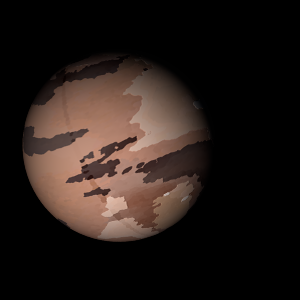|
|
Space Astro
|
Info for exoplanet "Kyoza Hyoze"
| Scientific (actual) data |
|---|
| Name | Kepler-248 c |
| Planet status | Confirmed |
| Radius | 0.363 |
| Orbital period | 16.2395 |
| Semi major axis | 0.123 |
| Discovered | 2014 |
| Updated | 2021-02-05 |
| Tconj | 2455010 |
| Impact parameter | 0.08 |
| Publication | Announced on a website |
| Detection type | Primary Transit |
| Alternate names | 2MASS J19321473+4334528 c, K00896.01, KIC 7825899 c, KOI-896 c, KOI-896.01, WISE J193214.73+433453.1 c |
| Star name | Kepler-248 |
| Right ascension | 293.06° |
| Declination | 43.58° |
| Mag j | 13.911 |
| Mag h | 13.442 |
| Mag k | 13.357 |
| Star distance | 754.65 |
| Star metallicity | 0.171 |
| Star radius | 0.83 |
| Star temperature | 5190 |
| Star alternate names | 2MASS J19321473+4334528, KIC 7825899, KOI-896, WISE J193214.73+433453.1 |
| Wikipedia article | Kepler-248 c |
Back
| |
| Fictional info (?) |
|---|
| Suggested name | Kyoza Hyoze |
| Planet type | Terrestrial |
|
| Atmosphere | Nitric oxide | 36% |
| Water vapor | 22% |
| Nitrogen | 19% |
| Carbon monoxide | 14% |
| Ozone | 5% |
| Sulfur dioxide | 3% |
| Atmospheric pressure | 0.28 bar |
 |
| No known satellites |
| Google search for Kyoza hyoze |
|
Website by Joachim Michaelis
|
|
|
|